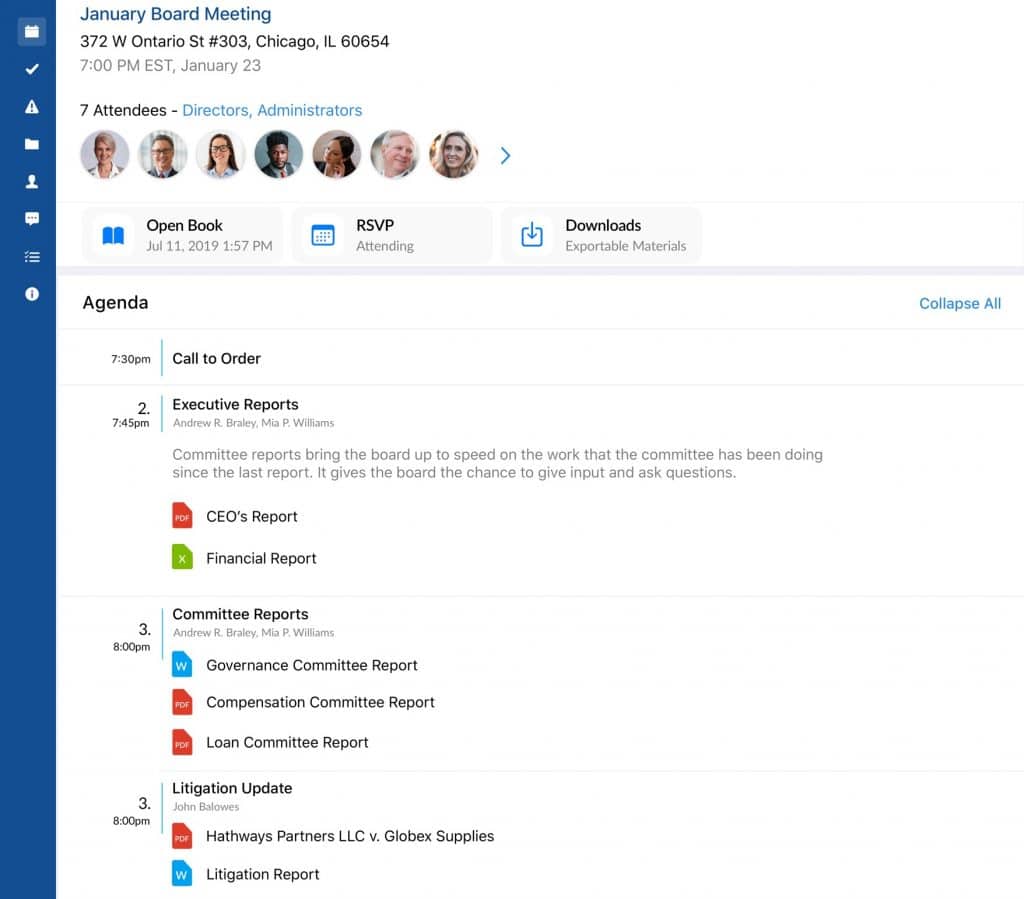Many organizations have been confronting multiple crises in the wake of the COVID-19 pandemic, such as the physical health of staff, declining resources, meeting payroll, etc. During these difficult times, collaboration and partnership between the management team and the board can prove an organization’s saving grace. The challenge, however, often becomes a balancing act: how to meet the crisis of the moment while also keeping a focus on the organization’s long-term mission and goals.
To better understand how to leverage a board’s expertise during times of crisis, we recently hosted a webinar with two experts:
- Andy Davis, BoardSource’s Associate VP of Member Education and Outreach
- Angela E. White, CFRE, Senior Consultant and CEO of Johnson, Grossnickle and Associates.
The following is a summary of the lessons they shared during that conversation.

Understanding the Four Phases of Disaster/Emergency Management
There are four phases of disaster or emergency management:
- Mitigation
- Preparedness
- Response
- Recovery
It may be tempting to ignore mitigation and preparedness when you’re in the middle of a crisis and move right to response and recovery modes. However, it’s essential to give the first two stages full thought and analysis. A crisis like COVID-19 is not a static situation. There are times when recovery looks imminent, only to suffer a significant setback. It’s just smart governance to carve out time to think about future crises (“What comes next?”) and determine what emergency management or preparation measures can be revisited.
Phase 1: Mitigation
There are five items your organization needs to accomplish during the Mitigation phase:
- Create a risk management team including your human resources and finance experts
- Designate a coordinator of the effort
- Create a Business Continuity Plan (BCP) to determine how you will serve your clients and fulfill your mission in a time of crisis
- Create a media strategy to communicate with your various stakeholders in times of disrupted or changed service
- Determine your best sources of information in times of crisis and establish communications channels
There are six ways a board can help during this phase:
- Ensure a Business Continuity Plan (BCP) is in place
- Make sure risk management is a part of the CEO’s job description
- Be ready to act when a crisis occurs
- Monitor the risk management plan so that it changes as the organization’s lifecycle changes
- Understand the budget ramifications of a crisis and which areas of revenue and expense are most likely to be impacted
- Manage investment funds to be able to access cash when needed in a crisis
Phase 2: Preparedness
There are five items your organization needs to accomplish during the Preparedness phase:
- Institute remote/work from home days to periodically test IT capabilities
- Periodically review insurance policies to make sure what is covered and make adjustments as needed
- Put a plan in place to hold remote/virtual board meetings
- Define who has the authority to cancel events and at what magnitude of financial impact
- Create a crisis communications plan
There are four ways a board can help during this phase:
- Define parameters for accessing financial reserves
- Review bylaws to determine whether virtual board meetings and voting are an option
- Periodically hold a virtual board meeting to practice the technology and IT capabilities
- Review the crisis communications plan
Phase 3: Response
There are nine items your organization needs to accomplish during the Response phase:
- Triage the most pressing issues
- Communicate regularly with your key stakeholders
- Analyze budget implications and create contingency plans
- Implement the Business Continuity Plan
- Institute remote work
- Reconfigure staffing needs
- Manage the stress response from all stakeholders: employees, volunteers, board members, donors, funders, etc.
- Access response/recovery funds (SBA, Cares Act, etc.) and insurance benefits and stabilize cash flow
- Observe where the disaster reveals weaknesses in your organization and begin prioritizing how to fix them in the future
There are ten ways a board can help during this phase:
- Support the CEO and back up the CEO on all decision making
- Support the implementation of the Business Continuity Plan
- Empower the CEO and team to be creative
- Allow employees to volunteer to serve
- Triage and manage the amount of “help” being offered by community members
- Offer guidance based on how their business and network is responding
- Begin documenting the organizational stressors
- Meet frequently to address real-time issues and keep the full board informed via email
- Support staff’s short-term decision-making while also advancing long-term needs
- Arrange for mental health support for staff, as needed
Phase 4: Recovery
There are ten items your organization needs to accomplish during the Recovery phase:
- Rebuild your business model and staffing to evaluate what is possible in this new environment
- Talk to your peers – learn from others
- Adopt a strategic plan as needed
- Access recovery funding
- Address the organizational weaknesses revealed during the crisis
- Create transition plans for the new normal for all stakeholders
- Acknowledge and manage the ongoing stress and trauma for all stakeholders
- Emerge from triage decision-making and make better long-term decisions
- Identify new areas for investment and divestment
- Re-negotiate stakeholder agreements, contracts, etc.
There are ten ways a board can help during this phase:
- Be unified in supporting the work and staff
- Celebrate the good work that was done during the crisis response
- Lend expertise from their staff
- Identify and capture “lessons learned” during the crisis response
- Create a plan for addressing the organizational stressors
- Meet as needed to address real-time issues
- Challenge and support the staff to renew long-term decision making
- Address board structure, relationships, and policies that hindered the board during the crisis
- Update the strategic plan and the Business Continuity Plan based on business model changes and this new normal
- Challenge board and staff to address what’s been left unsaid and unaddressed
How to Leverage Virtual Board Meetings to Drive Change
With most physical, in-person meetings off the table for the foreseeable future, it’s important to consider how an organization should properly conduct virtual board meetings during a crisis. After all, you can’t just take what you did during in-person meetings and automatically assume they will translate to a virtual environment. The absence of body language cues, “Zoom fatigue,” and other distractions are just some of the new challenges boards will encounter.
To hold an effective virtual board meeting, Andy and Angela also offered these recommendations
What to do before: prepare for the meeting
- Set the purpose, expectations, and timing for meetings – 1 to 2 hours max
- Create an outcome-based and time-constrained agenda for the critical decisions
- Utilize a consent agenda for standard committee reports and information sharing
- Post-meeting materials to a board portal 5 to 7 days in advance
- Offer training on the technology before the start of the meeting
What to do during: facilitate the meeting
- Set ground rules for engagement, not just attendance
- No repeat rule: Don’t repeat yourself or parrot back what someone else has said
- No dominance rule: Don’t hog the limited airtime
- State your name when you speak
- Every action has a person responsible and deadline
- Draw everyone into the conversation – pay attention to who is not contributing
- Clarify commitment, not seek consensus – use instant polling if you know how to do it
What to do after how to move forward
- Capture action steps, assignment, and deadlines in a common place and send to the group
- Squelch the meetings after the meetings (i.e., gossip)
- Do not revisit decisions (unless something genuinely new emerges)
- Determine intervals for benchmarks and feedback
- Assess technology – what worked and what didn’t work
- Set next meeting – perhaps more frequently than in otherwise normal conditions
A Board Portal Brings Everything Together
A board portal – also known as board management software – is a secure platform for boards of directors, executives, and administrators. It offers boards a robust set of tools they need during both during and outside times of crisis, including access meeting materials, communicate with each other, and execute their governance responsibilities.
There are a multitude of benefits of a board portal. For instance, board materials such as policies, documentation, and past decisions are too often scattered between emails, text messages, shared drives, and more. A board portal centralizes all board communications and content in one place, thus eliminating email overload, lost files, and communication breakdowns. This helps boards and committees improve governance, boost security, save money, and provide more actionable information to all board members.

How to Make the Right Choice When Selecting a Board Portal
We’ve made available a free, comprehensive Board Management Software Buyer’s Guide. This Buyer’s Guide is designed to help you navigate this often-confusing world, and to enable you to walk away equipped with the knowledge of what board software does, who it’s for, why it’s important, and how to make the case that your work would be strengthened by having one. Click here to download the Buyer’s Guide today!
Watch the Webinar Replay to Learn Even More
This summary offers a mere introduction of the action items and recommendations Andy and Angela recommended during the webinar. There was plenty more to be learned from this rich and thoughtful conversation, and we encourage everyone to watch the on-demand webinar replay at Passageways.com.
About The Author

- At OnBoard, we believe board meetings should be informed, effective, and uncomplicated. That’s why we give boards and leadership teams an elegant solution that simplifies governance. With customers in higher education, nonprofit, health care systems, government, and corporate enterprise business, OnBoard is the leading board management provider.
Latest entries
 Board Management SoftwareJuly 26, 20225 Critical Board Engagement Survey Questions
Board Management SoftwareJuly 26, 20225 Critical Board Engagement Survey Questions Board Management SoftwareJuly 19, 2022What is an Advisory Council? (Overview, Roles, and Responsibilities)
Board Management SoftwareJuly 19, 2022What is an Advisory Council? (Overview, Roles, and Responsibilities) Board Management SoftwareJuly 15, 2022Balance Sheet vs. Income Statement: What’s the Difference?
Board Management SoftwareJuly 15, 2022Balance Sheet vs. Income Statement: What’s the Difference? Board Management SoftwareJuly 12, 2022Sweat Equity: Mark Haas of the Dallas Cup Board Gives a Nonprofit Play-by-Play for Success
Board Management SoftwareJuly 12, 2022Sweat Equity: Mark Haas of the Dallas Cup Board Gives a Nonprofit Play-by-Play for Success

